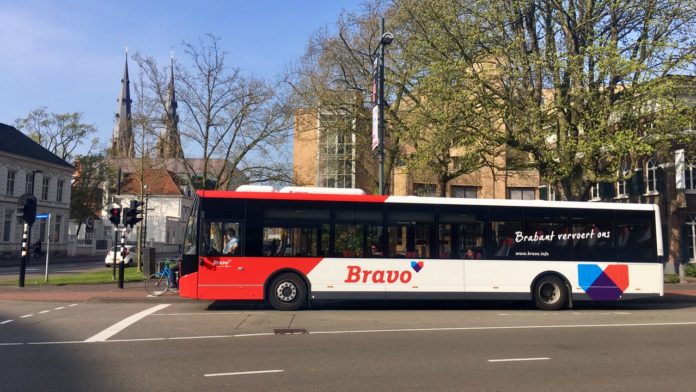Over the past five years, the number of bus stops in our province has fallen by six percent. Eindhoven lost 19 of the 238 bus stops.
In 2018, Brabant had 2900 bus stops. Five years later, it is now 2740 which means a decrease of 160. This is evident from figures collected by the national and regional broadcasters. Nationally, the number has decreased by an average of seven percent. The number of bus stops has fallen in ten of the twelve provinces, with Drenthe as the most significant outlier (-17%). Only in Zeeland and Flevoland did the number increase slightly.
One bus stop in Geffen
Sixty-seven Dutch villages are stripped of their bus stops in 2023. For example, Geffen, where five thousand live, had five bus stops in 2018. Now the only bus stop is next to the A59 motorway, a good one and a half kilometres from the central village square (Dorpsplein).
It was recently announced that the provincial board (Gedeputeerde Staten) wanted to reduce the bus offer for Andel (municipality of Altena). After protests that were even heard in The Hague, the provincial administration abandoned this plan. Students and the elderly in particular are the most affected
Problems for the economically disadvantaged
The results of the NOS study align with those of the Dutch environmental assessment agency’s (Planbureau voor de Leefomgeving) survey last year. Spokesperson Jeroen Bastiaanssen says: “We found that the accessibility of facilities and jobs in the rural area, villages and urban fringes is limited for those who depend on public transport. Moreover, that accessibility has decreased due to the reduction in public transport. People with low incomes quickly feel the difficulty.”
How many people are affected by the disappearance of bus stops is difficult to say. Bert van Wee, professor of transport policy at the Technical University of Delft, estimates that less than one percent of bus travellers have been affected in the past five years. “Stops that are cancelled are often relatively quiet. Moreover, some people can easily walk to a stop a little further away or transfer to the car or e-bike.”
Public transport under pressure
The professor of transport policy acknowledges that impoverishment can lead to harrowing situations but also says it is understandable that stops are disappearing. “In rural areas, public transport is under pressure because the number of users is limited. More and more people use cars or e-bikes, and you can do your shopping online and talk to your family via Skype. In addition, there are alternatives such as target group transport and subsidised taxis.”
An important question is for whom public transport is intended. Meurs: “Do you want to get people out of their cars, or do you see public transport as a basic service for people who need it because they don’t own a car or have difficulty walking? You can’t serve both groups at the same time with a regular bus system.”
Source: Omroep Brabant
Translator: Martijn
















